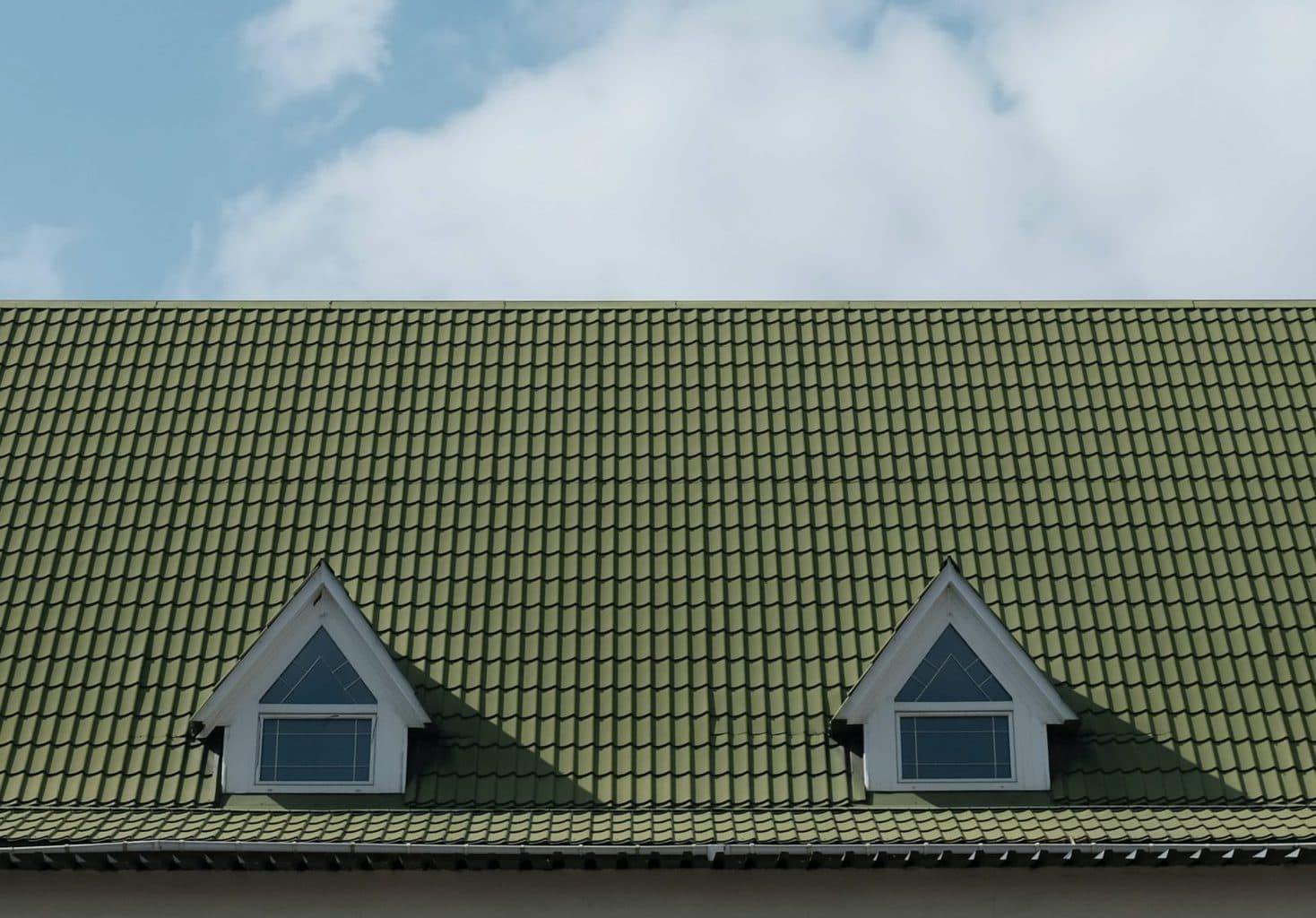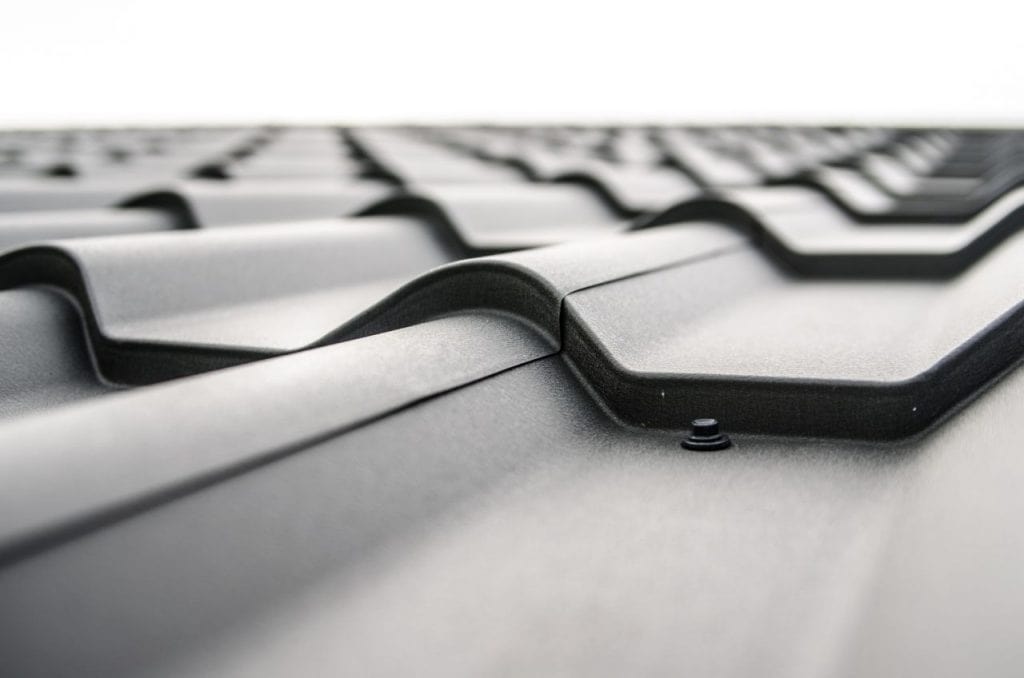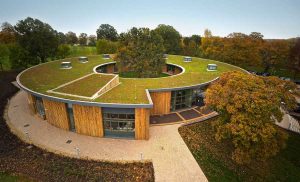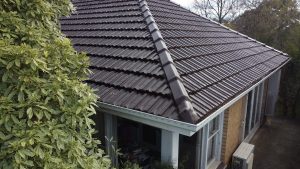Roofing materials come in a wide range of styles and colours, but choosing one for your home is about far more than style. The best kind for a particular house will be driven by the type of roof and the geographical location and climate.
Just as steeply pitched roofs are best for areas that get a lot of snow, houses in hot climates benefit from using certain materials. Unrelenting sunshine and heat can take their toll on a roof, causing them to crack and degrade over time.
This, in turn, can allow more heat to enter the house and make cooling it more expensive. While asphalt shingles might be the most common type of roofing in general, for hot climates, materials that facilitate airflow between the house and the roofing material will ultimately keep things cooler.
But roofs do a lot more than keep the sun off your back. A poorly made roof degrades in the heat, cracking and breaking down over time. It also transfers heat from the sun directly through the surface and into the home. That process, in turn, drives up energy costs from home cooling, making certain materials a lot less energy-efficient than others. Looking for a roof replacement? Check out Top Glaze for a wide range of roof services.
On the flip side, certain roof types not only stand up to the brutal heat with aplomb but also provide much-needed ventilation and airflow between the roofing material and the decking, meaning that homes stay cooler than they would with asphalt shingles.
Some materials make the thermal transfer much more difficult or reflect sunlight off the roof, keeping homes cool as a cucumber. Different hot-weather materials all have their pros and their cons, of course.
To help you weigh the different aspects, we present to you a guide of the most popular hot-climate roofing materials. Not sure what types to consider? Here are some of the most common types of roofing materials for hot climates.
The Best Roof Material for a Hot Climate
Some roof materials are built by design to stand up to harsh temperatures, dry conditions, and overbearing UV rays all year round without sacrificing ventilation and airflow through your attic and the rest of your home. Here are some of the most common and effective materials for a roof in a hot climate.

Lighter Colors
Asphalt tends to be the most common material used in a shingle roof, but the concentration and density of asphalt shingles in urban centres result in a mass absorption of heat, making for higher temperatures than in surrounding areas. This is known as the heat island effect.
This effect is mostly caused by the asphalt itself as well as its dark colours. Darker colours are more prone to absorbing heat from UV radiation, while light-coloured roofs reflect sunlight away. Painting your roof a lighter colour may reduce the heat island effect and help you save on your energy bills. However, not all roof materials can be painted or dyed.
Terra-Cotta Tiles
A common residential roofing material in Spain, Italy, Mexico, the American Southwest, and other regions well known for high heat and plentiful sunshine, terra-cotta traditionally comprises a baked clay.
The baking process is part of what contributes to terra-cotta’s resistance to hot climates. Baking these tiles in kilns creates a material that is durable and less porous, which prevents heat from getting trapped within the terra-cotta.
Terra-cotta tile roofs are highly durable, with some ancient buildings featuring the same tiles for centuries, but even modern terra-cotta tiles should last about 50 years on average.
While the material plays an important role in terra-cotta’s heat resistance, the actual shape and design also help to support its overall effect. Terra-cotta tiles are typically moulded in a half-barrel shape or S curve.
When the tiles are laid on the roof, they interlock to form arches. These arches allow for greater air and water circulation and reduce the amount of heat that gets trapped in the roof.
The main drawback of terra-cotta tiles is the weight.
These tiles can weigh up to four times as much as common asphalt or composite shingles. That means that they need a solid foundation that can carry that extra weight, which may require adding extra structural reinforcements to your home. If you do live in an area that experiences cold, wet weather, terra-cotta tiles may potentially snap and break.
The durability and style of terra-cotta also mean that these tiles usually come at a higher price. However, it may be worth it to invest in that slightly higher price as it may mean greater energy savings in the long run. We have a wide range of Melbourne roof replacement services at Top Glaze.
Concrete Tile
A slightly more affordable option than terra-cotta, concrete tiles are built thick, meaning it takes longer for the sun to heat through a slab of concrete and reach your home. Similar to terra-cotta, concrete tiles can also be formed into half-barrels or S shapes, allowing for greater air ventilation.
Dying the concrete a lighter colour can also help to prevent heat absorption. Concrete can be heavy, though, meaning you may need to spend extra on foundational support in your roof, and without painting or dying the concrete tiles, your roof design may not be the most aesthetically to look at.
EPDM
Short for ethylene propylene diene monomer, EPDM is a synthetic rubber-like material. Commonly used in commercial roofing, EPDM comprises a strong thermoplastic that is effectively resistant to weather, UV radiation, and general wear.
Optional roof coatings with titanium dioxide can improve the heat reduction potential by reflecting heat and sunlight. As EPDM is generally seamless, it can also help as a barrier against water and air leaks.
Unlike the previous two options, EPDM is also lightweight and malleable, allowing for easy installation. However, EPDM is not nearly as durable. While EPDM can withstand most weather, it can be easily damaged by fallen branches, rocks, and other debris.
Metal Roofs
Metal is the go-to trendy material in most warmer climates these days. Versatile and durable, metal roofing has seen a spike in usage thanks to its generally sustainable nature.
Most aluminium, steel, and copper roofing are made from recycled materials. Compared to other roofing materials, metal takes longer to heat up, holds less heat, and cools faster at night.
Most metal roofs that get installed also feature a conspicuous bit of space between the decking and the actual metal panels. That space essentially acts as a buffer or barrier that can prevent heat from travelling from the roof to the actual living area below.
Metal roofing does tend to cost a little more than other forms of roofing, though the durability and general lack of maintenance can help to balance out the upfront costs. Most types of metal must be treated to prevent rusting and corrosion.
Each panel also has to meet minimum standards for wind resistance. The installation also plays an important role. While metal roof panels can be installed at an angle, the roofer has to consider glare and adjust for slope.
Otherwise, the metal panels will keep you warm, but they may shine the sun into your neighbours’ homes or into the eyes of passing drivers. Looking for roof repairs? Look no further! Top Glaze has you covered.
Green Roofs

Green or living roofs consist of roofs covered in plants and moss suspended over a protective, waterproof membrane (usually EPDM). The membrane is filled with soil and propagated with a variety of local plant life.
The soil’s naturally cool temperature and the plant’s growing process keep the home cool by preventing heat absorption. During the colder months, a green roof also acts as an effective form of insulation to prevent heat loss.
Water runoff from the plants can also help to cool the building, and the plants naturally act as a radiant barrier for the roof foundation, increasing the roof’s longevity.
Best of all, green roofs are considered energy-efficient and naturally reduce the heat island effect. They also add oxygen back into the air, making them particularly important for large urban sprawls and areas that experience high traffic congestion.
However, green roofs require good planning, expertise, and vision. Green roofs can be installed on traditional roofs such as a gable or hip roof so that homeowners can take advantage of the many benefits they can offer.
Learn more about what is a gable or hip roof. You may also have to spend more to maintain the roof, from providing it with regular water to getting rid of weeds to repelling any potential pests.
How Roof Color Affects Your Home
Installing a new roof on your home is definitely an exciting time. And even if the ultimate purpose is the protection of your house, a new roof can completely change the look of your home, especially with a GERARD roof. There are several aspects you need to consider when choosing the colour and style that will suit your home the best.
As you drive through your neighbourhood, you may not pay much attention to roof colour. You know your own home has dark brown shingles, but you couldn’t name the colours that top your neighbour’s homes with the same confidence.
Roof colour tends to blend into the background and earn very little of our attention. But did you know your home’s roof colour affects your home? Read below to learn how.
How Roof Color Reflects or Absorbs Heat
Before you learn anything else about roof colour, take away this fact: roof colour affects your home’s internal temperature. In general, lighter-coloured roofs reflect away heat rays from the sun, but dark-coloured roofs absorb much of that heat and transfer it into the rooms below.
Or course, colour isn’t the only aspect of your roof that affects home temperature. The roofing material also affects how reflective your roof is. For example, asphalt shingles are less reflective than metal or rubber roofing materials. This quality means even tan asphalt shingles may welcome more heat into your home than a dark brown metal roof.
But back to roof color. How does your roof colour affect the temperature of your home? If you have a light roof, your home absorbs less heat through the roof during summertime. As a result, your air conditioner operates more efficiently, uses less energy, and leads to lower utility bills.
In contrast, a dark roof likely raises the temperature inside your home’s highest rooms. Your cooling system works harder to compensate for the extra heat, and your bills slowly rise.
But during the winter, the opposite conditions hold true. A dark roof brings in more desired heat from the sun than a light roof. This feature makes dark roofs advantageous in colder climates with long winters and short summers. Now, let’s consider how one other factor affects the equation: snow.
Which Is Better: Light Roofs or Dark Roofs?
Based on what you’ve learned so far, you may think light roofs are the clear winner. If dark roofs don’t warm your house or melt snow during the winter, should you just switch to a light-coloured roof to lower summer cooling costs? Perhaps.
Energy.gov recommends lighter-coloured roofs for houses in warm and hot climates. But they note that light roofs may increase energy costs in cooler climates.
To understand why to think about how a dark roof affects a home during spring and fall. The sun shines hours every day, and your roof isn’t yet blanketed with snow. Outside temperatures are cooler than summer, too, so you probably want a little extra heat inside to stay warm at night. A dark roof brings some of that desired warmth indoors naturally, allowing you to run your furnace or boiler at a lower setting.
As you may have guessed, there’s no straightforward answer to which is better, light roofs or dark roofs. Ultimately, the best roof colour for your home is the colour you like best. You don’t have to say goodbye to your dark roof unless you want to reduce your summer cooling bills. Plus, advances in roofing materials and colour selection mean you can likely find a colour you like in a roofing material that suits your home’s climate.
Although light-colored roofs have definite advantages, your best bet is to consult local roofing specialists. They can recommend the best roof colours if you want to switch, and they know reliable solutions to enhance energy efficiency or prevent ice dams if you like your current roof colour.
As you consider changing roof colour or material, keep your homeowner’s association restrictions in mind. Some neighbourhoods have rules stating which colours or materials you can use on your roof. Check with your HOA president before making any final decisions about roof changes.




